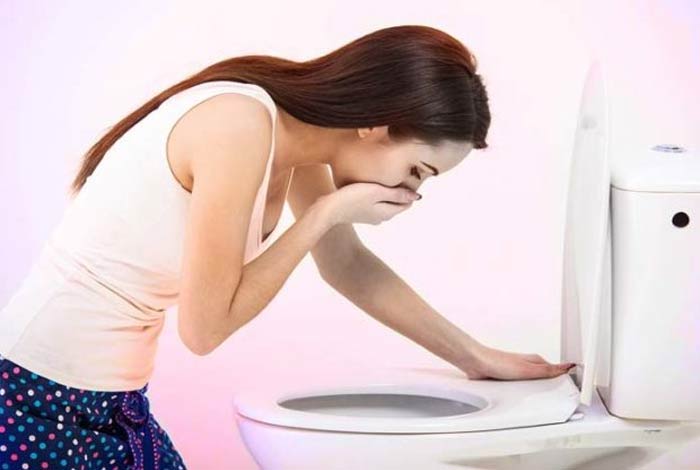
Overview and Facts
Migraine is a common clinical condition, characterized by recurrent and severe attacks of headache. These are usually accompanied by general symptoms of migraine like vomiting, nausea, sensitivity to smell, light and sound.
In general, it is considered as a headache problem, but evidently, there exist certain types of migraine with no sign of headache. However, such cases of migraine do show other characteristic symptoms of the condition.
A migraine patient might complain of ear pain, fluctuation hearing loss, loss in vision, dizziness, abdominal pain, sinus pressure and so forth. Migraine affects one in every five women and one out of every fifteen men. [Source]
Not all headaches are migraines, and several other types of headache also cause severe pain. Migraines are often accompanied with sensory warning signs and other related symptoms. According to National Institute of Health (NIH), around 12% of the total U.S. population, including children and adults, suffer from migraine.
It is believed that several changes in the level of neurotransmitters in the brain are responsible for migraine. More than 4 million U.S. adults experience chronic migraines daily, with a minimum of 15 migraine days every month. Around 85% of chronic migraine sufferers are females. Nearly 90% blame migraine for functional disability in their daily lives. [Source]
People, who suffer from migraine are mostly women, lower income groups, people aged between 25 to 55. [Source]
With respect to ethnicity, prevalence of migraine in Caucasians are relatively higher than Africans, Americans and Asians. [Source]
Types and Symptoms of Migraines
Types of Migraines:
There are several types of migraine as explained below:
- Migraine with Aura: It is also known as classic migraine in which people experience aura for up to 30 minutes before the actual initiation of migraine. The aura-specific symptoms may include observing flashy lights, distorted objects and wavy lines. These might also be accompanied by “needles and pins” feeling and tingling sensation. The effects due to an aura can also include confusing thoughts, blind spots in the vision, difficulty in speaking, unpleasant smells, and stiffness in limbs, neck and/or shoulders.
- Migraine without Aura: This is a common type of migraine, observed in 70-90% of the cases. The person experiences throbbing pain in only one part of the head. This pain gets worse by indulging in any physical activity and can be accompanied by vomiting, nausea, and sensitivity to light and sound. It might last from 4 hours to 3 days if not treated. An aura is commonly not experienced in this type of migraine.
- Migraine without Headache: This is an alarming type of migraine, wherein one experiences aura and other visual disturbances. Nausea and vomiting are experienced in this type of migraine, but there is no headache after aura; thus named, aura without headache.
- Hemiplegic Migraine: People suffering from this kind of migraine develop weakness only on one side of the body, and experience symptoms associated with aura and loss of sensation. It doesn’t always involve a headache.
- Retinal Migraine: If a person suffers from a temporary loss of vision due to headache, then it is referred to as retinal migraine. Women, who have recently delivered a baby, are more prone to retinal migraine, which may last for several days to even months.
- Chronic Migraine: If the headache persists for more than 15 days in a month, then the migraine said to be chronic. Some patients suffering from chronic migraine use acute pain medications that can lead to more frequent headache episodes.
- Menstrual Migraine: Migraine, which is generally timed around the menstrual cycle is called menstrual migraine.
- Abdominal Migraine: Abdominal migraine attack is usually associated with severe abdominal pain triggered by the factors that commonly responsible for migraine headache. It is most common in children below 14 years of age.
- Migraine with Brainstem Aura: This is a rare type of migraine, known to trigger various neurological changes, such as changes in speech.

Symptoms of Migraine:
Common symptoms of migraine are listed below:
- Nausea
- Vomiting
- Sensitivity to light, sound and smell
- Poor concentration or focus
- Feeling too hot or too cold
- Sweating
- Stomach or abdominal pain
- Diarrhea
- Eye pain
- Severe, pulsing or moderate throbbing pain only on one side of the head
- Blurred vision
- Temporary loss of vision
- Inability to perform daily activities
- Feeling sick and low

Risk Factors of Migraine
Several risk factors are discussed as follows:
- Age: Generally, migraine can occur at any age, but it is most common in adolescents. Also, migraine most frequently occurs during 30s and with time, it becomes less frequent and intense.
- Family History: If a person has a close family member suffering from migraine, chances are high for him/her to develop migraine in future.
- Gender: Women are at three times higher risk of developing migraine than men. After puberty, mostly girls develop migraine.
- Hormonal Changes: It is generally encountered before or after menstruation. Changes in migraine intensity and frequency might also be observed during the pregnancy or after menopause. Migraines generally improve after menopause.
- Lifestyle Choices: Indulging in alcohol consumption, being in a stressful environment and being overweight or underweight are possible risk factors that can trigger migraine.

Do I have Migraine?
If you experience recurrent and severe headaches, it could be a case of migraine. However, recurrent, chronic and severe headaches might be caused due to any other neurological or nerve-related condition, such as meningitis, tumor, blood clot, head trauma, blood vessel abnormalities, brain cancer or any other injury.
A person experiencing such headaches should visit a doctor immediately for proper diagnosis of the underlying condition.
Causes and Prevention
Causes of Migraine:
There is no exact cause of this condition known till date, but it is said to be triggered by several factors. Migraines are result of abnormal brain activity that temporary effects the nerve signals, blood vessels and the chemicals in the brain. Several migraine triggers are mentioned below:
- Hormone-Related Changes: Hormonal changes that occur in women during menstruation, pregnancy or menopause might cause migraine. A few women also encounter migraine after menopause or worsened migraines, unlike the common scenario, wherein women experience less severe and less frequent migraines after menopause.
- Emotional Factors: Emotional triggers, such as anxiety, tension, shock, depression, stress or excitement can lead to migraine.
- Physical Factors: Physical factors like poor postures, poor sleep, tension in the neck or shoulder, jet lag, hypoglycemia, tiredness and high intensity workouts can trigger a migraine attack.
- Dietary Factors: Consumption of alcohol, food additives, tyramine, caffeinated products like tea or coffee, citrus fruits, chocolate and cheese can lead to migraine. Dehydration as well as having delayed, missed or irregular meals can also trigger migraine.
- Environmental Factors: These include strong smells, loud noises, smoke, flickering screens (television or computers), sudden climate changes and bright lights.
- Certain Medications: Medicines, such as sleeping pills or combined contraceptive pills are believed to initiate migraine. Hormone replacement therapy (HRT) used to relieve menopause-related symptoms is also one such migraine trigger.
- Changes in wake-sleep pattern: Sleep deprivation or oversleeping are also known to trigger migraine.

Prevention of Migraine:
Below given are several preventive measures that one can take to avoid migraine attacks:
- Transcutaneous Supraorbital Nerve Stimulation (t-SNS): The U.S. Food and Drug Administration (FDA) approved the device, called Cefaly as a preventive measure for migraine. It consists of a headband with electrodes, and stimulates a nerve linked with migraine attacks. Research indicates that people, who used this device, experienced migraine less frequently.
- Create a Consistent Sleep Pattern: Try to stick to a daily schedule with regular sleep patterns. Both oversleeping or sleep deprivation can trigger migraine.
- Consume Meals Regularly: Having meals at regular interval, and not skipping or missing meals help in preventing migraine. Drink plenty of water to avoid dehydration. Not consuming alcoholic beverages also help prevent migraine.
- Exercise Regularly: Regular, moderate exercise is recommended to prevent migraine. Overdoing workouts and strenuous exercises might also trigger migraine.
- Reduce Stress: Trying to lower anxiety, stress and depression levels help prevent migraine. A person must indulge in recreational activities like listening music, walking, meditating or yoga to reduce stress.
- Trying Alternate Therapies: Therapies such as acupuncture, massage and psychotherapy can help in preventing migraine attacks.
- Preventive Migraine Medications: Preventive medications for migraine aim at making pain attack less severe, less frequent and of shorter duration. Certain supplements, such as coenzyme Q10, magnesium citrate, vitamin B 12 and vitamin B2 are helpful in preventing migraine.
Several medications used to prevent migraine are anti-seizure drugs like topiramate, propranolol (beta blocker), Botox or botulinum toxin type A. Certain triptans like frovatriptan are known to prevent menstrual migraine.

Diagnosis and Tests
For diagnosing migraine, a doctor usually begins by learning the headache-related history of the patient. Proper diagnosis ensures correct treatment. Migraine diagnosis may include one or a combination of the below-mentioned strategies:
1. Headache History: Migraine can be better diagnosed if a person informs the doctor about:
- His/her age when the headache started
- If he/she knows any trigger
- If anyone from his/her family has migraine
- The location of the pain
- The duration of the headache
- The frequency of the headache
- Time of the day when headache occurs
- Whether aura is experienced or not
- Symptoms related to headache like aura, nausea, vomiting, and sensitivity to smell, light or noise.
2. Physical and Neurological Diagnosis: The doctor will look for the symptoms that might be associated with any other illness, such as, fever, blood pressure changes, mental confusion, seizures, loss of consciousness, fatigue, muscle weakness, numbness, dizziness and vision changes.
The doctor may also conduct neurological tests to rule out any other nerve or neurological condition that is causing the headache, such as meningitis, tumor, blood clots, brain cancer, blood vessel abnormalities, head trauma, or any other injury.
3. Tests for the Diagnosis of any Other Serious Condition: These may include:
- Blood Test: The doctor might conduct blood test for any infection in spinal cord or brain, toxins in the system or blood vessel problems.
- Magnetic Resonance Imaging (MRI): MRI scans can help in detailed viewing of the blood vessels and brain. .
- Computerized Tomography (CT) Scan: The doctor can diagnose bleeding in the brain, infections, tumors, stroke or any other neurological conditions by viewing the cross-sectional images of the brain as produced by the CT scan.
- Spinal Tap (Lumbar Puncture): A sample of the cerebrospinal fluid is recovered from the lower back by inserting a thin needle between the two vertebrae. This sample fluid is then sent for analysis to detect any bleeding in the brain or other such related condition.

Treatment and Care
Treatment of migraine requires acute or abortive medications that can be consumed during a migraine attack. These medications can reduce or completely nullify the associated symptoms.
- Pain Relievers: There are several pain relievers that help in the treatment of mild migraine. These include ibuprofen, aspirin, and acetaminophen. These medications if consumed for longer duration can cause several peptic ulcers, gastrointestinal bleeding and headache due to overuse.
- Triptans: Triptans are generally used to treat mild or moderate migraine. These block the pain pathways in the brain and constricts blood vessels. These are widely available in form of nasal sprays, injections and pills. Triptans include rizatriptan, naratriptan, sumatriptan, almotriptan, frovatriptan, and eletriptan.
General side effects of triptans include dizziness, nausea, muscle weakness and drowsiness. It is to be noted that triptans must not be consumed by people, who are at a higher risk of stroke and heart attack. - Ergots: Drugs having combination of caffeine and ergotamine are used to treat migraine. However, these have less effectiveness than triptans, and might lead to increase in nausea and vomiting as well as initiate medication-overuse headache. Dihydroergotamine is a more effective version of ergot, which is more comparatively more effective with lesser side effects.
- Anti-Nausea Medication: As nausea is an associated symptom of migraine, anti-nausea medications can be prescribed by a doctor. These include metoclopramide, prochlorperazine and chlorpromazine.
- Opioid Medications: Opioid medications are prescribed when a person can’t take triptans or ergots. These are usually habit forming, and used only when there is no alternative treatment left. Codeine is one such opioid medication used to relieve migraine pains.
- Glucocorticoids: These medications are used to enhance pain relief. These must not be consumed frequently as they have some side effects. Prednisone and dexamethasone are examples of glucocorticoids.
Care for People with Migraine:
Migraine often leads to disability in sufferers and they might not be able to perform all their daily activities, especially during a migraine attack. The family, friends and co-workers must be empathetic towards a migraine sufferer and must adjust their schedules in a way that they might be able to help the migraine sufferer in cases of sudden migraine attacks.
The family, friends and co-workers must constantly remind a sufferer to limit his/her daily activities and avoid all possible migraine triggers. They must also ask a sufferer to maintain a migraine journal with all the possible triggers, frequency and time of migraine attacks.
With continued support from caregivers, it would be relatively easy for a migraine sufferer to avoid migraine attacks and also perform his/her daily tasks with least hassles.

OTC Medications and Self-Management Methods for Migraine
Over-the-Counter (OTC) Medications:
Common OTC drugs available for migraine are aspirin, acetaminophen, naproxen sodium and ibuprofen.
Other medications for migraine should be used only after consulting a doctor.
There are various supplements that are known to be beneficial in migraine. These include vitamin B 12, coenzyme Q10 and magnesium supplements. Vitamin D supplement can be taken to reduce the frequency of migraine episodes.
Self-Management Methods:
A migraine sufferer can manage his condition in the following ways:
- Have regular meals and avoid sugary snacks
- Drink around 2 liters of water everyday
- Limit caffeine and alcohol consumption
- Take enough sleep
- Avoid the triggers that could initiate migraine
- Exercise regularly
- Keep the rooms properly ventilated
- Avoid reflecting surfaces, bright or flickering lights and strong smells like that of a perfume
- Use sunglasses or hat under sunlight.
- Ensure that the computer screens must be antiglare
- Take small breaks during work and take care of the posture
- Maintain a migraine journal, which includes timing, frequency and severity of migraine attacks
- Try to identify the triggers and avoid them
- Learn various relaxation techniques, such as meditation and yoga
- Learn to say no to activities and things that might initiate a migraine attack
- Get enough sleep, but do not oversleep
- Indulge in several muscle-relaxation exercises

Natural Ways to Cure Migraine
Some natural ways to cure migraine are described below:
- Acupuncture: Acupuncture is an ancient Chinese technique of inserting fine needles into the skin at various points called meridians. Acupuncture is known to treat migraine effectively.
- Biofeedback: Biofeedback is a relaxation technique. It involves the use of special equipment that teaches a person to develop control over involuntary functions of the body, such as heart rate and muscle tension. Biofeedback helps relieve migraine symptoms.
- Massage Therapy: Massage therapy might help reduce the frequency of the migraine attacks. Further research is needed to know more about how massage therapy affects migraine pains.
- Cognitive Behavioral Therapy (CBT): It is a psychotherapy that teaches how thoughts and behavior help a person in perceiving pain. CBT has shown to be beneficial for migraine patients.
- Herbs, Vitamins and Minerals: Herbs like feverfew and butterbur have evidently shown to prevent migraine and reduce the severity of the pain. Including nuts in one’s diet can also help prevent and relieve pain associated with migraine. Intake of magnesium, vitamin B12, coenzyme Q10 through various foods like yogurt, eggs, milk, spinach, broccoli is also known to help in the prevention of migraine attacks and relieve associated pain.
- Hydrotherapy: Hydrotherapy is basically therapeutic use of water. For relieving migraine pains, having a hot bath is believed to be beneficial. Applying ice massage to the neck and dipping legs in warm water simultaneously help relieve migraine pain.
- Aromatherapy: Use of certain essential oils like lavender oil and rosemary oil is beneficial in relieving migraine pains and easing muscle tension.

Health Tip by Expert
Pregnant or breast-feeding women, who suffer from migraine, should consult a doctor before reaching out for any medication. Some medications are also not meant for children. A doctor can only prescribe the best suitable medication for children and pregnant women suffering from migraine.




